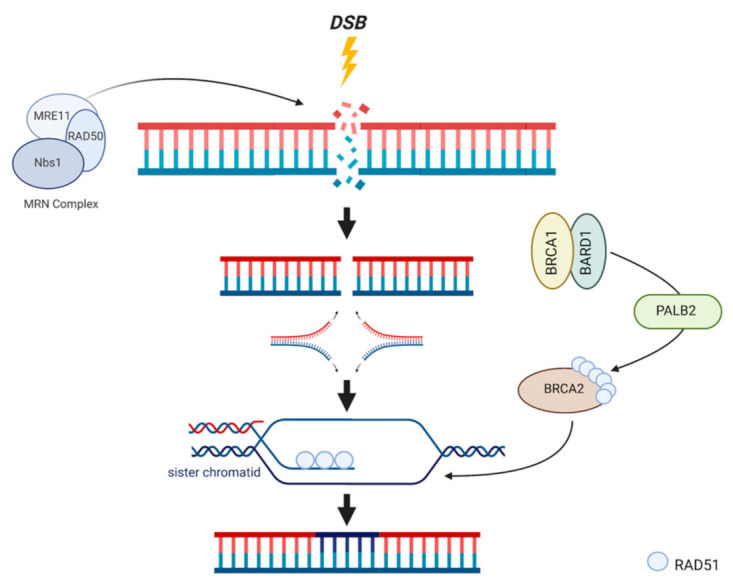Figure 2.

HR mechanism of action. DSBs are recognized by the MRN complex, initiating BRCA1 activation. BRCA1 and BARD1 bind via their identical RING domains to form a heterodimer which localizes to the site of damage following excision of damaged bases by an exonuclease. PALB2 is recruited to form the BRCA1/BARD1/PALB2 complex, which is responsible for recruiting BRCA2/RAD51. After DNA unwinding and dissociation, RAD51 is unloaded onto the damaged strand, and leads this strand to its available identical sister chromatid. Invasion into the sister chromatid facilitates template polymerization and subsequent ligation.
